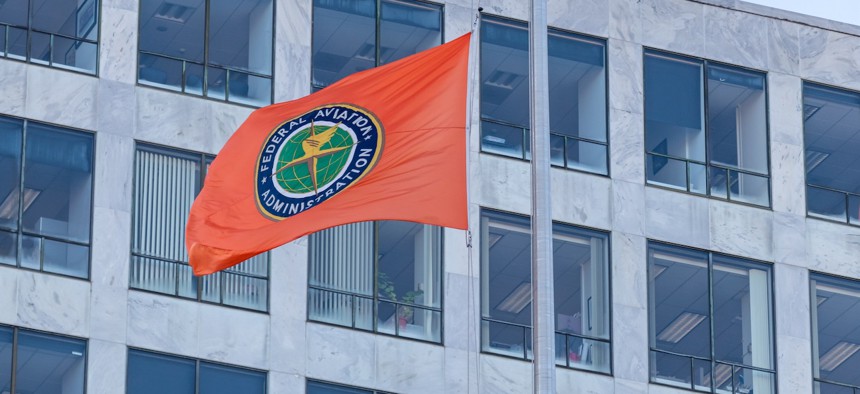
FAA is currently authorized on a temporary basis that is set to expire March 8. The Bold Bureau/Getty Images
Senate FAA bill drops ‘maximum hiring’ provision aimed at addressing staffing crisis
The bill would take several steps to tackle workforce issues that could cripple the national aviation system, but employee groups are warning they are insufficient.
The Senate on Thursday moved one step closer to finally reauthorizing the Federal Aviation Administration and addressing the longstanding staffing issues that all parties and stakeholders have highlighted as reaching critical levels, though current employees are raising concerns the measure does not go far enough.
The bill, approved by the Senate Commerce, Science and Transportation Committee, would require a new workforce model, boost training capacity and increase the use of expedited hiring authority. Agency officials, the White House and lawmakers in both parties have stressed that growing FAA's workforce is a top priority and a failure to address it could reduce safety and increase flight delays. FAA is currently authorized on a temporary basis that is set to expire March 8.
While the bill would build new staffing targets that take into consideration the needs of individual facilities and input from the labor groups, the National Air Traffic Controllers Association said the measure omitted a key provision. The group is looking to include a requirement that FAA hire to the maximum level it can process through its training facility for at least the next five years. The more aggressive approach is necessary to restore FAA staffing levels, the union said, as the agency employs 1,100 fewer air traffic controllers today than it did in 2012.
According to recent findings by the National Airspace System Safety Review Team that FAA formed after 10 safety incidents occurred in late 2022 and early 2023, the staffing reductions occurred despite a marked increase in the complexity of the agency’s operations. The capacity deficiencies have created inefficient operations, the panel found, requiring a constant reshuffling of resources to ensure the airspace can function. In the process, it said, employees are being stretched thin and “critical redundancy” is being eliminated.
Overtime use is at an all-time high within FAA, which the review team said is leading to more absenteeism, lower productivity and increased fatigue. Insufficient staffing is forcing FAA to negotiate schedule reductions with certain areas to maintain the safety of operations, implement more ground stops and combine locations to fall under one post.
The House, which easily passed its reauthorization bill in July, included the “maximum hiring” provision. Like the Senate, it too included requirements to reform and update FAA’s staffing models.
The Senate measure would mandate that FAA build a second training academy, which lawmakers said would help address the training backlog and the overall shortage of 3,000 air traffic controllers. A prior FAA working group found the agency must maintain more than 14,000 controllers to meet demand, compared to the 12,000 it is targeting under its current model and the less than 11,000 it has on staff. New FAA Administrator Michael Whittaker has also endorsed the plan for a second academy. The bill would also create new assessments for the needs of the safety inspector workforce and ease the pathway into FAA for former military members.
NATCA praised the committee for advancing its bill and addressing some staffing concerns, but said it still would not fully alleviate the looming crisis. After accounting for attrition, FAA netted just 15 new controllers and 15 additional trainees in 2023.
“This staffing crisis did not happen overnight, and it cannot be fixed easily or immediately,” the group said, adding FAA must “conduct maximum controller hiring to ensure the controller workforce can meet the growing demands of current and future air traffic including integrating new users into the system.”
Sen. Mike Braun, R-Ind., introduced a standalone bill, The 2023 Air Traffic Controllers Hiring Act (S. 2839), with more than two-dozen bipartisan backers to institute the maximum hiring provision.
The White House in July took issue with the broad hiring mandates included in the House version of the reauthorization bill. While supporting the overall goal of growing staffing levels, the Office of Management and Budget expressed concerns it could weaken the “administrator’s ability and authority to determine the appropriate size and allocation of the air traffic controller workforce.”
The bill will now move to the Senate for a floor vote. If it passes there, it would then have to reconcile its differences with the House and both chambers would need to vote on a final bill to send to President Biden’s desk.







